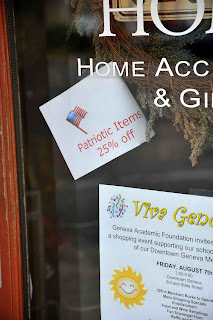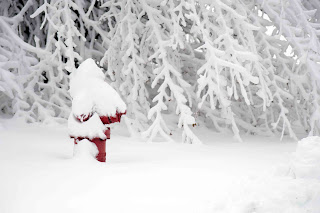Welcome to the mystery of picture control!!
 Here's a photograph of Mimi, with Vivid Picture Mode. It appeared striking in the monitor (very intense reds and yellows), so I was happy, despite the wild contrast between her fur and the seat of this very chair I'm on right now.
Here's a photograph of Mimi, with Vivid Picture Mode. It appeared striking in the monitor (very intense reds and yellows), so I was happy, despite the wild contrast between her fur and the seat of this very chair I'm on right now.

Now, the same cat, under the same light and on the same spot... but with Neutral Picture Control. The fur looked terribly flat, the colors were muted, the entire palette from the Vivid setting was gone.

So, I switched to Standard. Here I saw a type of compromise between Vivid and Neutral; an amicable middle ground in terms of color saturation and contrast.
Now... that was before downloading the files into my computer and then resizing them (hopefully better this time) for internet viewing.
Vivid... it doesn't look too vivid, does it?
Neutral doesn't sound half as bad as my description of the jpeg in the D700 monitor. I'm feeling like with egg on my face...
Standard, however, still looks like an acceptable compromise here.
Lesson learned?
Besides never to trust your monitor... the fact that these shots look pretty much the same in my monitor leads me to wonder what the effect of this setting may be on prints.
In the meanwhile, this is what I did with the files: they were all RAW (NEFs) downloaded to the computer via card reader and Nikon Transfer. Then, opened with PSE 6 for Mac, and turned into JPEGs. The consequent, intermediate JPEGs were resized in size and resolution (say, from whatever they were to 1550 on the larger side, and the resolution down to 150 dpi). After this, I did a "Save for Web" function, and set the JPEG parameters in High. Oh, and I also reopened the "cleansed" files and reduced the print size from 13 inches to 8 (on the large side). In short, all files now should be clearly viewable in almost any screen size, not just in my 20-inch monster. At no time whatsoever did I do any alteration in color or exposure here. In short, except for the file conversion and re-compression, these are the photographs that came out of the camera.
I'm interested in your reactions, and will appreciate comments. Of course, soon enough I should have something to say about the prints of these images...
 This one above was taken at night, at ISO 6400. It's the Cole Hall Memorial, to commemorate the five NIU students shot in February 14, 2008. The one below, however, shows an artifact in the middle of the building; that's what happens when you push the limits of the sensor.
This one above was taken at night, at ISO 6400. It's the Cole Hall Memorial, to commemorate the five NIU students shot in February 14, 2008. The one below, however, shows an artifact in the middle of the building; that's what happens when you push the limits of the sensor. There's a new toy in town, a Nikon AF 70-210 f4-5.6. It's a non-D lens, and you can see it here, attached to my F100. As far a lenses is concerned, it's small, compact and practical. In fact, I think it's sharp enough to do the job of bringing stuff closer. However, it is noisy and the AF isn't as fast as if it were an f2.8. One might wonder what's the use of getting a lens like this... and, to be quite honest, the price was sooooo reasonable it would have been foolish to pass.
There's a new toy in town, a Nikon AF 70-210 f4-5.6. It's a non-D lens, and you can see it here, attached to my F100. As far a lenses is concerned, it's small, compact and practical. In fact, I think it's sharp enough to do the job of bringing stuff closer. However, it is noisy and the AF isn't as fast as if it were an f2.8. One might wonder what's the use of getting a lens like this... and, to be quite honest, the price was sooooo reasonable it would have been foolish to pass.  Now, the day I was out "testing" my new toy (and I do have some photos with it, but will post them later), I saw this stand-off in the yard: Mimi chased a squirrel and forced it to go up the tree. And Ben? He was just supervising her.
Now, the day I was out "testing" my new toy (and I do have some photos with it, but will post them later), I saw this stand-off in the yard: Mimi chased a squirrel and forced it to go up the tree. And Ben? He was just supervising her. 














































